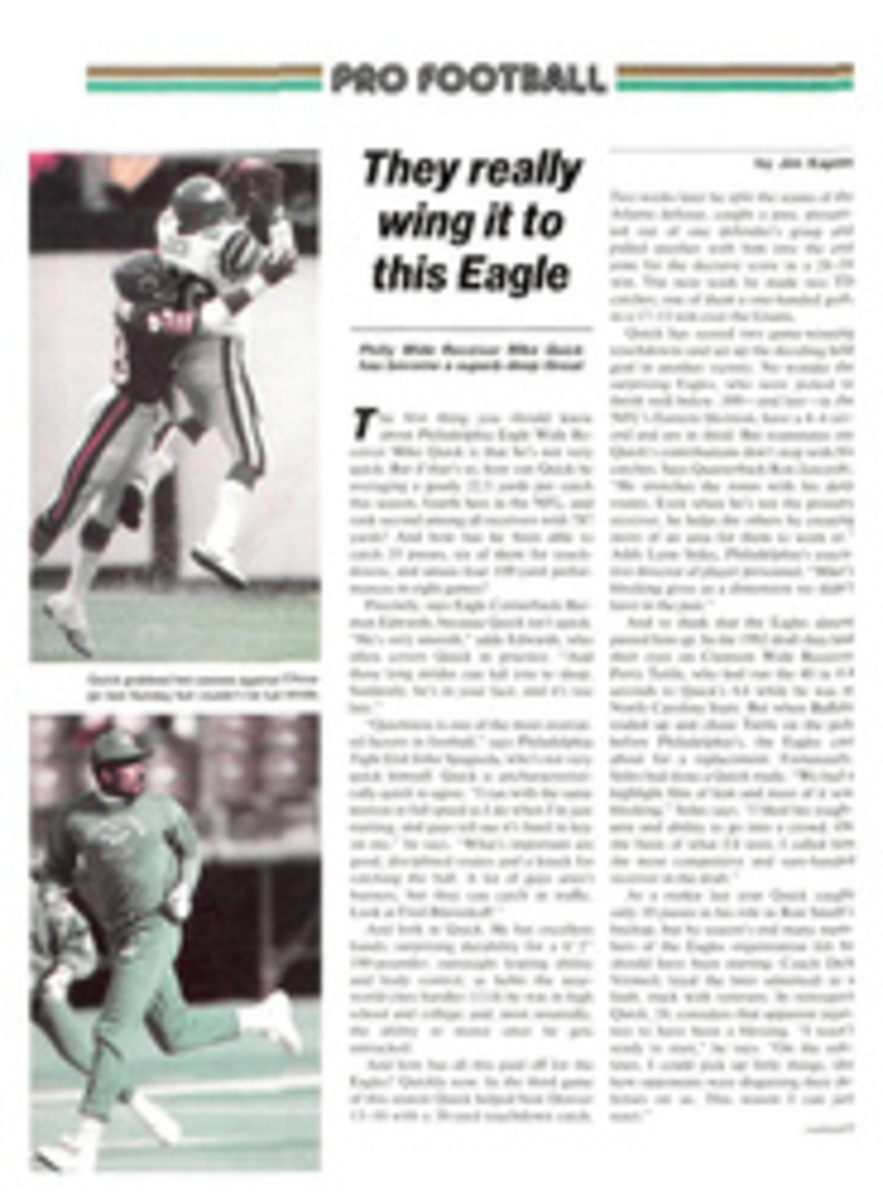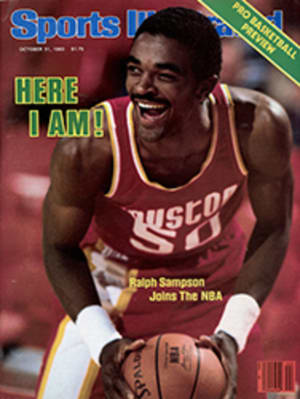
CHAMPION JIGSAW PUZZLERS GET THE PICTURE WITHOUT FALLING TO PIECES
One piece every seven seconds. That's what 21-year-old Joellen Beifuss averaged during the 59 minutes and 43 seconds it took her to win the singles title at the second annual National Jigsaw Puzzle Championships in Athens, Ohio. Beifuss, a junior political science major at Duke University, put her 500-piece finals puzzle together so quickly that the whole puzzling affair smelled fishy.
But no. The championship puzzles, which were designed by Hallmark Cards, Inc., had been kept under lock and key and seen by no one but Hallmark officials until the sealed boxes arrived on the backs of three parachutists moments before the finals began. The wind was light, and the parachutists landed on target in the pasture in front of The Dairy Barn, Southeastern Ohio Cultural Arts Center, which hosted the finals on Aug. 21.
So nobody could have cheated. Cheating at puzzling doesn't make much sense, anyway—unless you're the type Ann-Margret played in the movie The Cincinnati Kid. While her boyfriend, Steve McQueen, played big-time poker, she sat in her room working on puzzles, using scissors to cut off the edges of pieces that didn't fit.
But Ann-Margret was bored, and the puzzlers in Athens were fired up. At the gun the 15 finalists—down from 264 singles entrants—tore open their boxes, dumped the contents on white-paper-wrapped lunch tables and commenced puzzling. Each had been given a floral arrangement entitled, "Please Pick the Flowers." It would take a normal human about 10 minutes just to separate all the pieces and turn them over. But in that time Beifuss had already finished half a dozen bouquets and was well into the edge.
It should be noted that watching somebody make a puzzle is about as exciting as watching a worm make soil, unless you care a lot about either process, or it's done fast. And Beifuss was fast. She cut more than 2½ hours from last year's winning singles time, a time which had been described in Hallmark's press kit as "incredible." Onlookers were reverent. "She's devastating," said third-place finisher Andy Bradburn, 21, from Chicago. "She must have a photographic memory," said meet organizer Diane Wall. "She can look at a blank space and then find the piece that fits without looking back."
What really stunned observers was Beifuss' ability to puzzle with both hands, a feat roughly akin, puzzlers imply, to Steve Carlton alternating right-and left-handed sliders. Afterward, Beifuss sat in the sun, her T-shirt sleeves rolled up to facilitate tanning, and shrugged off her feat. "People tell me I was using both hands," she said, smiling. "But I don't remember."
One contestant who didn't get too worked up over matters was the aptly named John Blythe, 42, of Denver. "I don't see how you could consider this a sport in any way. I think some people have an innate ability to put puzzles together," said Blythe, who placed fifth in singles last year, the highest finish by a male in 1982, and was named this year's "King of Puzzling," a sort of puzzling sportsmanship award. "Too many people who are good at it are just quirks. They're not well-rounded people."
But Blythe himself is proof that rough edges are what make puzzlers so interesting. Though he is married, has a year-old child, went to Yale and dresses straight preppie, Blythe is happily without a job. And he is not looking for one. He hasn't had one for 18 years. So what does he do? "Nothing," he says. "Really, I mean that." No hidden trust funds, either. "You'd be amazed at how little money you need to live," he says cheerily.
Blythe, who hitched a ride to the Athens finals, entered the "sprints" this year, a new contest for the Carl Lewises of puzzling. In head-to-head competition sprinters work on plate-sized, 70-piece puzzles, eliminating one another until one sprinter remains. The prize for first place in the sprints was a selection of Hallmark puzzles, while the singles and doubles titlists pocketed $1,000.
In the second round of the sprints, Blythe took on April Neth, an excitable high school senior from Columbus, Ind. An accomplished gymnast and runner, Neth, 17, was trembling with competitive fervor before starting on her puzzle, a rainbow scene. Blythe beat her soundly, however, cunningly doing the white background and edges before the primary colors, and Neth pounded the table in disgust. A moment later she was smiling, though. "I'll definitely be back," she said. "I just got messed up on the rainbow. I think I had it going the wrong way."
Blythe himself made it only to the fourth of eight rounds in the sprints, but he didn't mind. "Money is of no importance," he explained again. And, of course, if he'd made it to the finals he would have had to face the two-handed Beifuss, who also won the sprints pulling away.
The first puzzles were carved in the mid-1700s by an Englishman named John Spilsbury. His puzzles were maps of the world, which seems to be a more logical way of using odd shapes than the single-color puzzles on the market today. Through the years puzzling has gone in and out of style, but right now it's a growth industry, with some $40 million worth of sales annually. Who puzzles? People "who have been encouraged as children to explore and seek answers," says Edward L. Deci, professor of psychology at the University of Rochester. Bing Crosby, Gary Cooper and Marilyn Monroe liked to puzzle. But how were they against the clock?
"I don't know what it takes to be good at this," says Lisa Heiser, 19, who, along with her married sister, Lori Reeves, 23, repeated as doubles champion this year, completing a 1,000-piecer in a little more than two hours and 20 minutes. "We're both lousy at math, so that's out."
"I like needlepoint," says Lori.
"But I don't," says Lisa.
What both Columbus, Ohio, natives dislike are bad puzzles. "We threw out a puzzle of pins and needles this year because we couldn't stand it," says Lori. "We had some other bad ones, too. Macaroni, I think. And baked beans."
"They were unappetizing," says Lisa.
There is no trick to good puzzling, the sisters say. Just stick with color groups and major objects. If you can start with the edge, great, but don't get hung up on it. "Don't try to do the things you can't do," says Lori. "Keep moving."
Beifuss' approach to puzzling is even more casual. During the school year she doesn't mess with puzzles at all. At home in Memphis she'll put Bruce Springsteen or the Police on the stereo, place a board on her lap and puzzle the night away. "It's not total concentration," she says. "You can talk to people and do puzzles at the same time, which is nice."
PHOTO
WIL MCINTYRE
After she surveys her scattered domain, puzzle queen Beifuss begins work on its unification.

